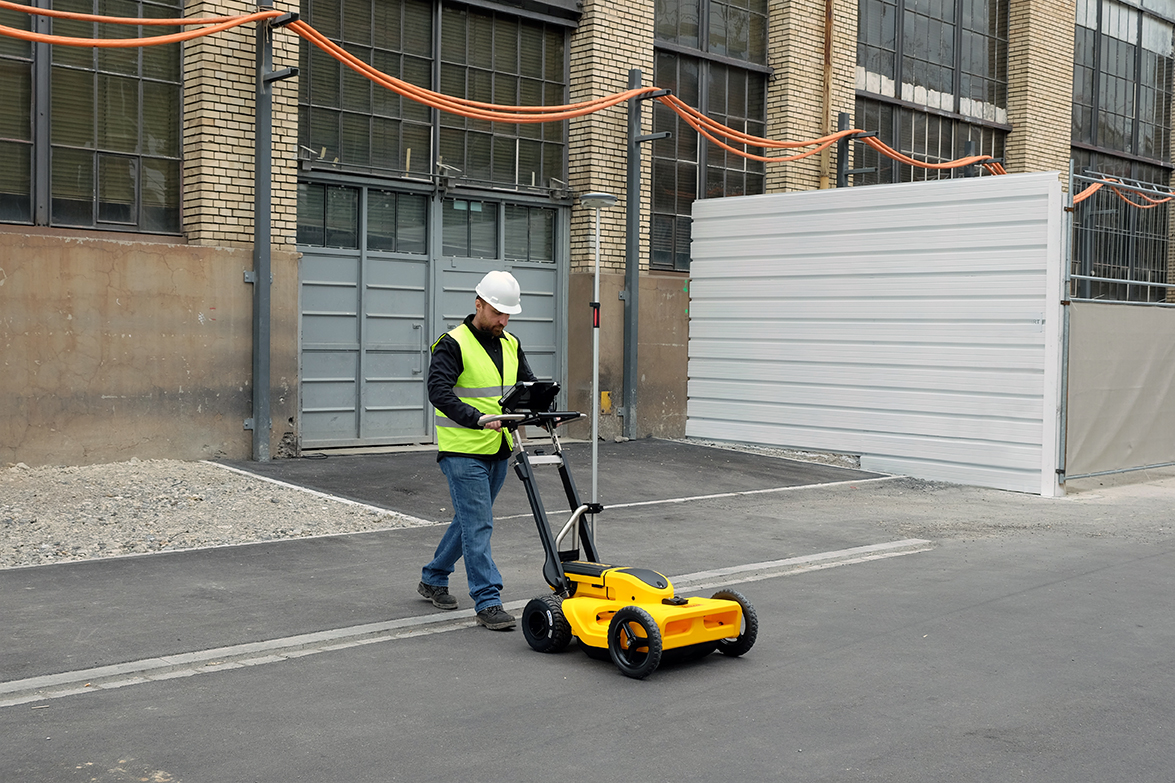Map critical data above and below the ground with utility mapping
In the vastly interconnected and intricate infrastructure that we live in today, executing projects smoothly and safely demands the precise knowledge of what lies beneath the surface. Utility mapping is an important player in the management of underground networks that power our cities and deliver essential services. It involves accurately locating and mapping underground utilities such as water pipes, electrical cables, and gas lines to prevent accidents and ensure efficient maintenance.
Understanding utility mapping software
Utility mapping software is a specialized tool designed to accurately locate and map underground infrastructure such as electrical cables, water pipes, and gas lines. It uses advanced technologies like Ground-Penetrating Radar (GPR), Geographic Information Systems (GIS), and electromagnetic locators to detect and visualize these utilities beneath the ground surface. The primary goal is to provide precise spatial data that helps in managing and maintaining critical infrastructure without causing damage or disruption.
Utility mapping software plays a crucial role in managing and visualizing critical utility data by transforming complex underground information into clear, actionable insights. It allows infrastructure managers, engineers, and planners to access detailed maps that show the exact locations, depths, and types of underground utilities. This information is essential for making informed decisions about construction projects, maintenance schedules, and emergency responses.
Key features of utility mapping software
Utility mapping software offers several key features that enhance its utility and effectiveness:
- GIS integration: By integrating with Geographic Information Systems, utility mapping software enables users to overlay underground utility data with other geographical information. This integration provides a comprehensive view that helps in better planning and coordination of infrastructure projects.
- 3D modeling capabilities: Advanced software can create detailed 3D models of underground utilities. These models accurately depict the spatial relationships between utilities and above-ground structures, allowing for precise planning and visualization.
- Data visualization tools: Utility mapping software includes powerful data visualization tools that present complex underground data in easy-to-understand formats. This includes interactive maps, color-coded layers, and graphical representations that facilitate quick analysis and decision-making.
These features collectively enhance efficiency in infrastructure planning and management by:
- Improving accuracy: By providing accurate spatial data, utility mapping software reduces the risk of excavation accidents and costly damages to underground utilities.
- Optimizing resource Allocation: Detailed maps and data visualization tools help in allocating resources more effectively. This includes planning construction routes, scheduling maintenance activities, and optimizing utility service delivery.
- Enhancing safety: Accurate mapping reduces the likelihood of utility-related accidents during construction, ensuring the safety of workers and the public.
Benefits of underground utility mapping software
Utility mapping for construction
Utility mapping ensures that subterranean services, such as electrical wires and water pipes, are precisely located before any digging starts, which is a critical function in supporting construction projects. By doing this, unintentional harm to these critical infrastructure is reduced, which helps avoid expensive delays and repairs. The precise location of utilities helps construction teams organize their work more efficiently, preventing delays and needless costs. This streamlines and expedites the construction process by saving time and lowering project expenses overall.
Improving safety and efficiency
The risk of accidents during excavation is reduced on building sites thanks to accurate utility mapping. Construction workers may operate more safely and confidently when they are aware of the exact locations of subterranean utilities. This lessens the possibility of running into water pipes, electrical cables, or gas lines—all of which might seriously endanger both the workers and the locals.
Moreover, better resource allocation results from effective mapping. Project managers can more efficiently distribute resources if they are aware of the subterranean infrastructure’s layout in advance. This results in the efficient utilization of labor, supplies, and machinery, maximizing project schedules and guaranteeing smooth work progress. Construction projects are consequently finished on time, under budget, and to the required grade of quality with no unforeseen delays.
Advanced capabilities of underground utility mapping software
Technological Innovations in Mapping Software
Modern utility mapping software incorporates cutting-edge technologies such as Ground-Penetrating Radar (GPR) and electromagnetic locators, significantly enhancing the accuracy and depth of utility mapping.
- Ground-Penetrating Radar (GPR) is a technology that uses radar pulses to image the subsurface. It can detect objects and variations in material properties underground, including pipes, cables, and other utilities. By analyzing the reflected signals, GPR provides detailed insights into the depth and location of buried infrastructure. This capability helps utility mapping specialists accurately map underground utilities without the need for excavation, minimizing disruption and costs.
- Electromagnetic locators are another crucial tool in utility mapping software. These devices use electromagnetic fields to detect conductive materials like metal pipes and cables buried underground. They are particularly useful for locating metallic utilities that may not be accurately documented in existing records. Electromagnetic locators allow mapping professionals to verify the presence and location of utilities quickly and efficiently, ensuring comprehensive and reliable mapping data.
Integration with GIS and 3D modeling
GIS integration allows mapping software to overlay utility data with geographical features and spatial data layers. This integration provides a comprehensive view of both above and below-ground infrastructure, facilitating better decision-making and planning. GIS enables users to analyze utility maps in the context of their surroundings, such as roads, buildings, and environmental factors, enhancing the accuracy and utility of the mapping information.
3D modeling capabilities in utility mapping software offer a more detailed representation of the subsurface environment. By creating three-dimensional models of underground utilities, including their spatial relationships and depths, mapping specialists gain a clearer understanding of the infrastructure layout. This visual representation helps in identifying potential conflicts, optimizing utility placement, and improving overall project efficiency. 3D modeling also aids in communication by providing stakeholders with a realistic view of underground infrastructure, fostering better collaboration and informed decision-making.
Why choose PointMan for underground utility mapping?
PointMan stands out as a premier choice for utility mapping software, trusted by professionals worldwide. It combines cutting-edge technology with user-friendly features to streamline the mapping process.
Key features of PointMan:
- Real-time data integration: PointMan excels in integrating real-time data from various sources, ensuring that users always have the most accurate information at their fingertips. This capability allows for immediate updates and adjustments during fieldwork, enhancing overall project efficiency.
- Mobile accessibility: With PointMan’s mobile accessibility, field teams can access and update mapping data directly from the site. This eliminates the need for manual data transfer, reducing errors and speeding up the mapping process significantly.
Benefits of PointMan
- Ease of use: Designed with simplicity in mind, PointMan offers an intuitive interface that allows both new users and experienced professionals to navigate the software effortlessly. This ease of use translates into quicker adoption and minimal training time.
- Precision mapping capabilities: PointMan’s advanced mapping capabilities ensure precise location and visualization of underground utilities. Users can accurately identify the depth, type, and layout of utilities, reducing the risk of excavation accidents and project delays.
- Support for large-scale projects: whether it’s a small-scale construction site or a large infrastructure project, PointMan scales effectively to meet diverse mapping needs. It handles extensive data sets with ease, making it an ideal choice for complex and expansive projects.
Keep an eye for more latest news & updates on Next we Blog!






